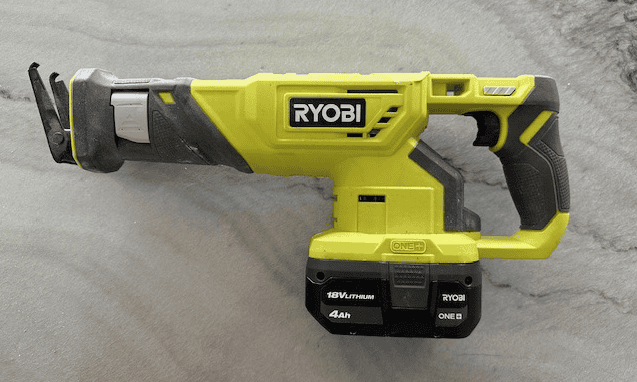A reciprocating saw, also known as a sawzall, is a versatile power tool that uses a push-and-pull motion of the blade to cut through various materials. It is commonly used for demolition, construction, and remodeling tasks, making it an essential tool for professionals and DIY enthusiasts alike. The saw’s blade is easily interchangeable, allowing it to cut through wood, metal, PVC, and more with ease.
History
The reciprocating saw was first introduced in the 1950s by Milwaukee Electric Tool Corporation, which branded it as the “Sawzall.” This tool revolutionized the construction and demolition industries by providing a powerful, handheld saw capable of making both straight and curved cuts. Over the decades, advancements in technology and design have improved the saw’s efficiency, power, and versatility, making it a staple in toolkits worldwide.
Types of Reciprocating Saws
- Corded Reciprocating Saws
- Cordless Reciprocating Saws
- Compact Reciprocating Saws
- Pivoting Reciprocating Saws
Reciprocating Saw Key Features
- Variable speed settings
- Orbital action
- Adjustable shoe
- Quick-change blade system
- Anti-vibration technology
- Brushless motors (for cordless models)
Choosing the Right Reciprocating Saw
When selecting a reciprocating saw, consider the types of projects you will undertake. For heavy-duty tasks, a corded model may be preferable due to its constant power supply. Cordless models offer greater mobility and convenience, ideal for jobs that require moving around a lot. Look for features such as variable speed settings and orbital action to enhance versatility. Additionally, ergonomic designs with anti-vibration technology can reduce user fatigue during prolonged use.
Recommendations
Proper Use and Techniques
To use a reciprocating saw effectively, ensure the correct blade type is installed for the material you are cutting. Secure the material firmly and maintain a steady grip on the saw. Start with a slower speed to make an initial groove, then increase speed as needed. Use the shoe of the saw to stabilize your cut and reduce blade wobbling. For plunge cuts, start with the blade tip and carefully push the saw into the material.
Maintenance and Care
Regular maintenance of your reciprocating saw will extend its lifespan and ensure optimal performance. Clean the tool after each use, removing debris and dust from the blade and motor housing. Inspect and replace worn blades promptly. For corded models, check the power cord for damage. For cordless models, ensure the battery is charged and in good condition. Lubricate moving parts as recommended by the manufacturer to prevent wear and tear.
Reciprocating Saw Safety Tips
- Always wear appropriate personal protective equipment (PPE), including safety glasses, gloves, and hearing protection.
- Ensure the saw is powered off before changing blades or making adjustments.
- Keep hands and other body parts away from the blade while the saw is in operation.
- Use both hands to control the saw, maintaining a firm grip.
- Be aware of the material you are cutting and avoid cutting into hidden electrical wires or pipes.
Conclusion
A reciprocating saw is a powerful and versatile tool that can tackle a wide range of cutting tasks. By understanding its features, choosing the right model for your needs, and following proper usage and maintenance guidelines, you can maximize the effectiveness and longevity of this essential tool. Always prioritize safety to ensure a smooth and successful DIY experience.


